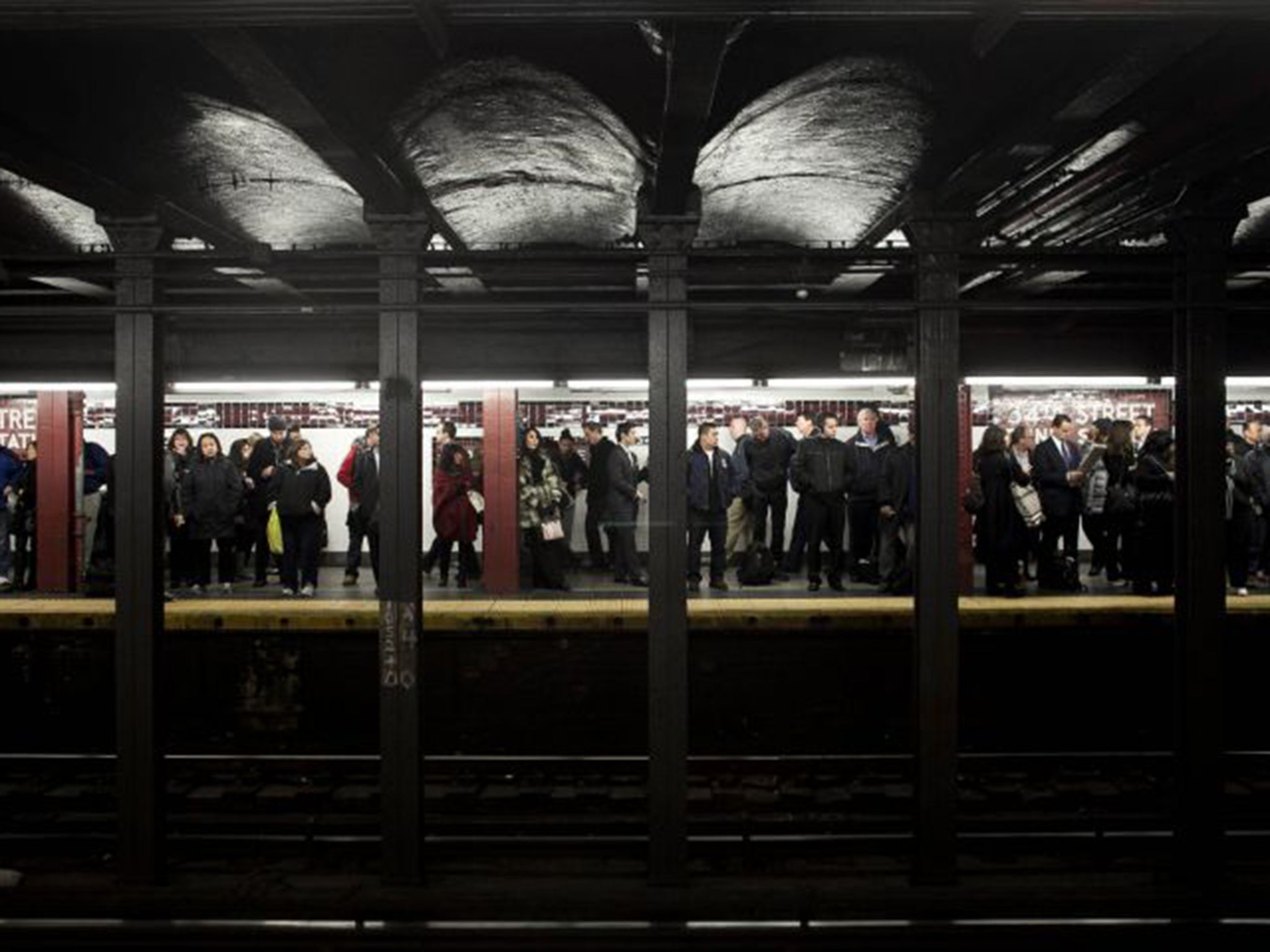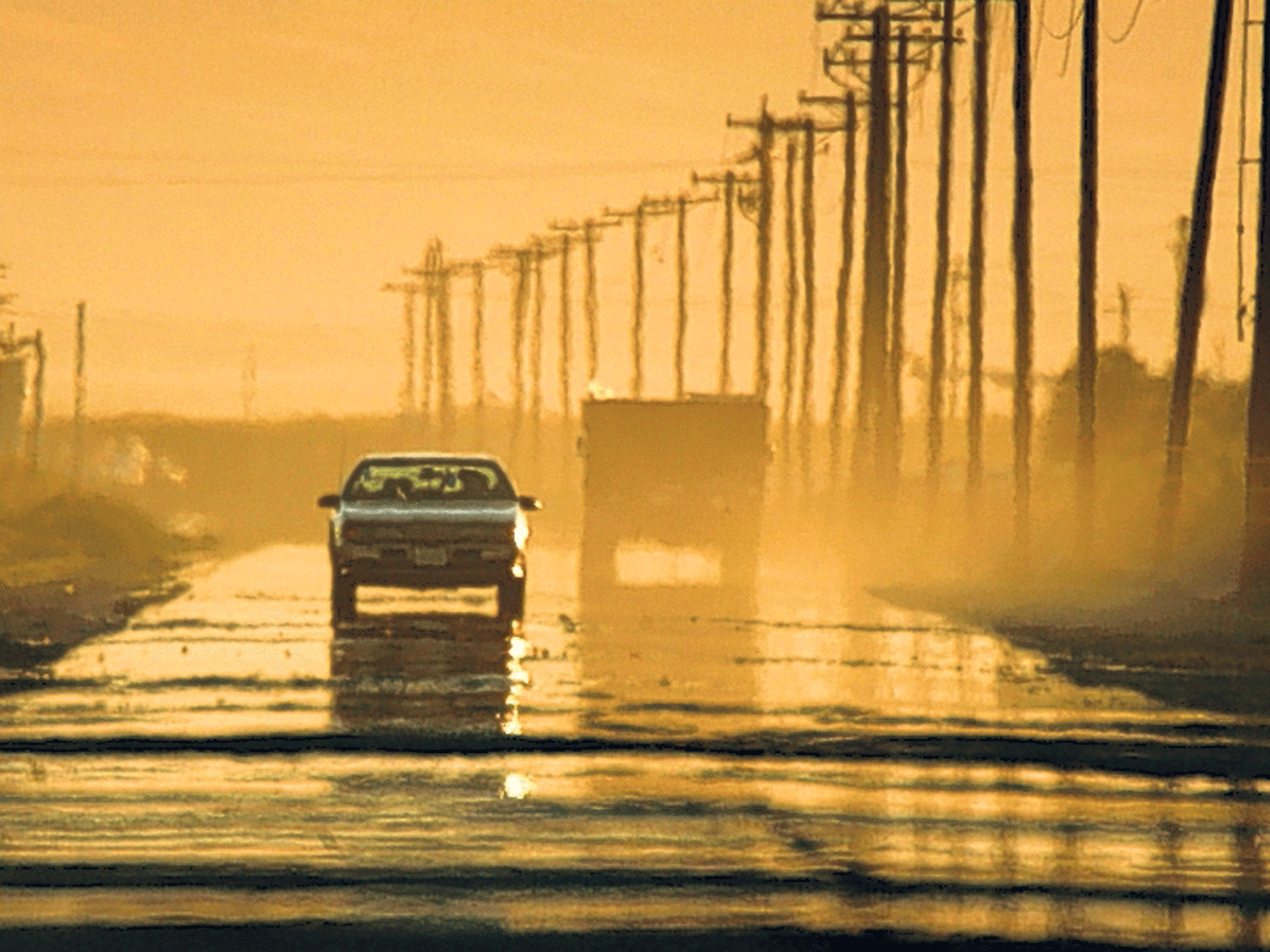The US economy is under threat because of its neglected infrastructure
Public spending on roads, airports, bridges, railways and power grids is only half of Europe's, and some say the nation’s very prosperity is threatened


Ah, the first signs of spring in the capital of the free world. Thickening buds on the azaleas and dogwoods, the start of the Cherry Blossom festival, and the new baseball season (can the hometown Nationals win the World Series?) just a fortnight away. Oh yes, and the potholes.
This spring they’re worse than ever. Not just on the back roads but on major highways too, some of them veritable elephant traps. Hit a couple of them at speed and your car’s a candidate for the knacker’s yard. America being America, some clever person has even come up with a dollar number for the damage they cause – $6.4bn (£4.2bn) for 2014, which was also a pretty brutal winter in the eastern US. This year will surely be no less costly.
Potholes are an unavoidable fact of life in climates such as Washington’s, of successive freezes and thaws, rainstorms and snowstorms, and God knows what corrosive chemicals slathered on the roads to keep them open. Indubitably though, there are now more potholes than ever. And they are a symptom of a far deeper crisis, one that some say threatens the very economic pre-eminence of America.
The way to eliminate potholes, or at least diminish their number, is to keep the roads in good shape, with regular resurfacing. But far less is being done than required. And the same goes for the rest of the infrastructure in the US: not just roads, but ports and airports, bridges, railways and power grids, those boring basics that keep a country running. America, to believe the title of a recent television documentary on the subject, is falling apart – literally.
Not so long ago the opposite was true. The US was the shining future that had already arrived. It had the best technology, the most modern cities, the fanciest cars, the most up-to-date airports. The jewel in the crown was the interstate highway system, built in the 1950s and 1960s to knit a continent together.
Alas, sooner or later, youthful beauty fades. And so it is with America’s infrastructure. Many of those projects date back to the immediate post-war years, even to FDR’s New Deal to counter the Great Depression. More than half a century later, they’re in desperate need of overhaul or replacement.
Surveys merely confirm America’s relative slide. A World Economic Forum report ranking countries by infrastructure puts America 25th (Britain came 24th while the winner, you might have guessed, was Switzerland). In air transport, a field pioneered by the US, the country has fallen to 30th – and anyone navigating New York’s grubby and congested airports, or drab Dulles here in DC, would consider that assessment flattering. Astonishingly, not a single major new airport has opened in the US since Denver International in 1995.
Another report claims that almost a third of America’s most important roads need major repair, while 70,000 bridges – one in nine – are deemed “structurally deficient”; in plain English, unsafe. In Pittsburgh, a river city where bridges are all, the proportion is one in five. A couple of times in recent years, these arid figures became real-life disasters: when the bridge at Minneapolis over the Mississippi, carrying Interstate I-35, collapsed in 2007, killing 13 people; and in 2013 when a bridge failed on I-5, the main Pacific coast highway, in Washington state.
In a car-addicted country, rail transport is inevitably something of a side-show. But that doesn’t explain why, of the 14,000-plus miles of high-speed rail in operation around the world, not a single mile is in the US – not even in the north-east corridor, where the national rail company Amtrak actually owns the track between Washington, New York and Boston, and where a high-speed link really would relieve congestion in the country’s most crowded airspace. Of course, you’d have to do something about railway stations too. Arriving at Penn Station in New York is to enter the antechamber of Hades.

In sea transport as well, America is losing ground. Ports on both Atlantic and Pacific coasts are scrambling to be ready to accommodate the larger New Panamax container ships that will pass through the expanded Panama Canal. But the two biggest, Los Angeles and nearby Long Beach, which handle 40 per cent of US imports, are already desperately congested, way behind the game.
It adds up to a pretty grim picture. Since the 1960s, public spending on infrastructure, as a share of GDP, has dropped to around half the European average and, the American Society of Civil Engineers reckons, $3.6trn will have to be spent if the US is to catch up. It’s a huge ask, for the federal government, the states and private investors who will have to put up the money. But if not, the ASCE warns, the price in terms of potential exports, jobs and personal income lost could be no less high.
Of course, you can’t fix everything at once, but some partial solutions are obvious. Federal spending on roads comes from the Highway Trust Fund, set up back in 1956 to finance the new interstates. But the fund gains its resources from the federal petrol tax, which has been stuck at 18 cents a gallon since 1993. Today, the fund is close to insolvent.
So why not raise the tax? The moment is perfect: the pump price of petrol has dropped by 40 per cent in three years, while today’s fuel-efficient vehicles use less of the stuff. What better moment to slip through a tax increase that few would notice, to pay for the better roads America needs? Alas, tax increases of any kind are anathema to the Republicans who run Congress. And of course serious action on boring old infrastructure isn’t half as much fun as futile votes to repeal Obamacare (56 and counting).
All, however, is not lost. When asked about new public works projects in state ballot initiatives, three-quarters of the time voters are in favour, even at the cost of taxpayers’ money. And if you asked about potholes, the yes vote would be 100 per cent.
Join our commenting forum
Join thought-provoking conversations, follow other Independent readers and see their replies
Comments